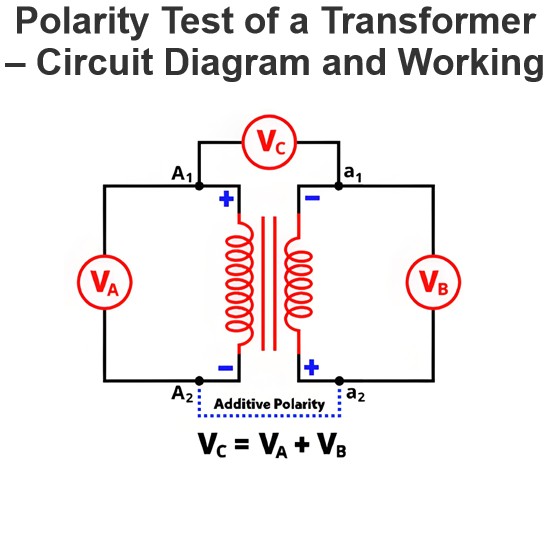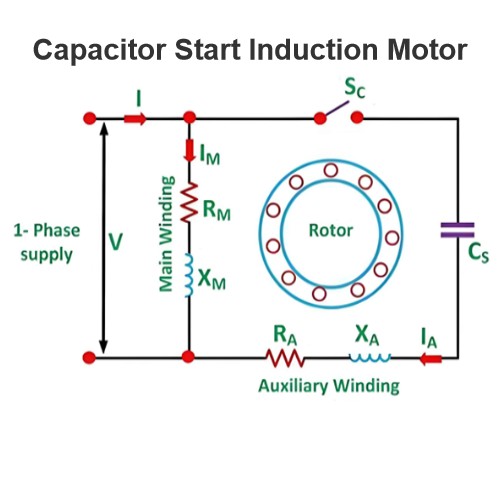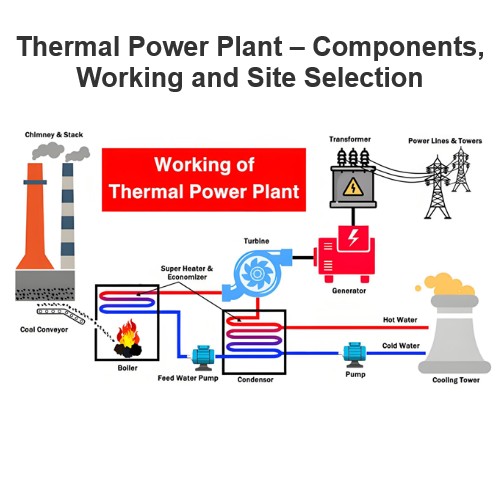Hydrogen Cooling of a Synchronous Generator
Hydrogen Cooling of Synchronous Generators
Hydrogen gas is utilized as a cooling medium within generator casings due to its exceptional cooling properties. However, it's crucial to note that certain mixtures of hydrogen and air are highly explosive. An explosive reaction can occur when the hydrogen - air mixture contains anywhere from 6% hydrogen and 94% air to 71% hydrogen and 29% air. Mixtures with more than 71% hydrogen are non - combustible. In practical applications, a 9:1 ratio of hydrogen to air is commonly employed in very large turbo - alternators.
Key Aspects of Hydrogen Cooling
Advantages over Air Cooling
Enhanced Cooling Performance: Hydrogen gas boasts a significantly higher thermal conductivity compared to air. It has 1.5 times the heat transfer capability of air, enabling much faster cooling of the generator components. This rapid heat dissipation helps maintain optimal operating temperatures and reduces the risk of overheating.
Improved Windage, Efficiency, and Reduced Noise: At the same temperature and pressure, the density of hydrogen is approximately 1/14th that of air. When the rotating parts of the generator operate in this low - density hydrogen gas environment, windage losses are minimized. As a result, the overall efficiency of the machine increases, and the noise generated during operation is reduced, leading to a more efficient and quieter generator.
Corona Prevention: When air is used as a cooling medium, corona discharge can occur within the generator. This discharge produces substances such as ozone, nitrogen oxides, and nitric acid, which can severely damage the insulation of the generator. In contrast, hydrogen cooling effectively prevents the corona effect, thereby extending the lifespan of the insulation and reducing the need for frequent maintenance and replacement.
Limitations
Costly Construction: Hydrogen - cooled alternators require more expensive frames. This is due to the necessity of implementing explosion - proof construction and gas - tight shaft seals to prevent hydrogen leaks and potential explosions. These additional safety features add to the overall manufacturing cost of the generator.
Complex Gas Admission Process: Special precautions must be taken when introducing hydrogen into the alternator to avoid creating explosive mixtures. Two common methods are used:
Gas Substitution: First, the air inside the alternator is replaced with carbon dioxide (CO2), and then hydrogen is introduced. This step - by - step process ensures that the explosive range of hydrogen - air mixtures is avoided.
Vacuum Pumping: The alternator unit is evacuated to 1/5th of the atmospheric pressure before hydrogen is admitted. This reduces the presence of air and minimizes the risk of an explosive reaction during the hydrogen introduction.
Additional Cooling Requirements: To effectively extract heat from the hydrogen, cooling coils carrying oil or water must be installed inside the generator casing. These coils are essential for maintaining the proper temperature of the hydrogen as it circulates through the machine.
Capacity Limitations: Despite its many advantages, hydrogen cooling is insufficient for large alternators with capacities exceeding 500 MW. The heat generated by these high - power machines requires more advanced cooling solutions, such as direct water cooling, to ensure reliable operation.
Operational Details
To prevent the formation of explosive hydrogen - air mixtures, the hydrogen gas inside the generator is maintained at a pressure higher than the atmospheric pressure. This positive pressure prevents the inward seepage of air, which could contaminate the hydrogen and create a dangerous situation. Hydrogen cooling at pressures 1, 2, and 3 times the atmospheric pressure can increase the generator's rating by 15%, 30%, and 40% respectively, compared to its air - cooled rating.
Hydrogen cooling systems require a fully sealed and efficient circulating system. Special oil - sealed glands are installed between the shaft and the casing. These glands play a crucial role in preventing hydrogen leakage and air ingress. Since the oil in these glands absorbs both leaking hydrogen and incoming air, it needs to be purified regularly to maintain its effectiveness.
The hydrogen gas is circulated through the rotor and stator of the generator using blowers and fans. After passing through the generator components, the heated hydrogen is directed over cooling coils located inside the casing. These coils, which can be filled with either oil or water, absorb the heat from the hydrogen, cooling it down before it is recirculated back through the generator.
Overall, hydrogen cooling offers several significant benefits over air cooling, including improved cooling efficiency, enhanced machine performance, and extended insulation life. However, it also comes with its own set of challenges and limitations that need to be carefully managed to ensure safe and reliable operation of the generator.
The Electricity Encyclopedia is dedicated to accelerating the dissemination and application of electricity knowledge and adding impetus to the development and innovation of the electricity industry.













